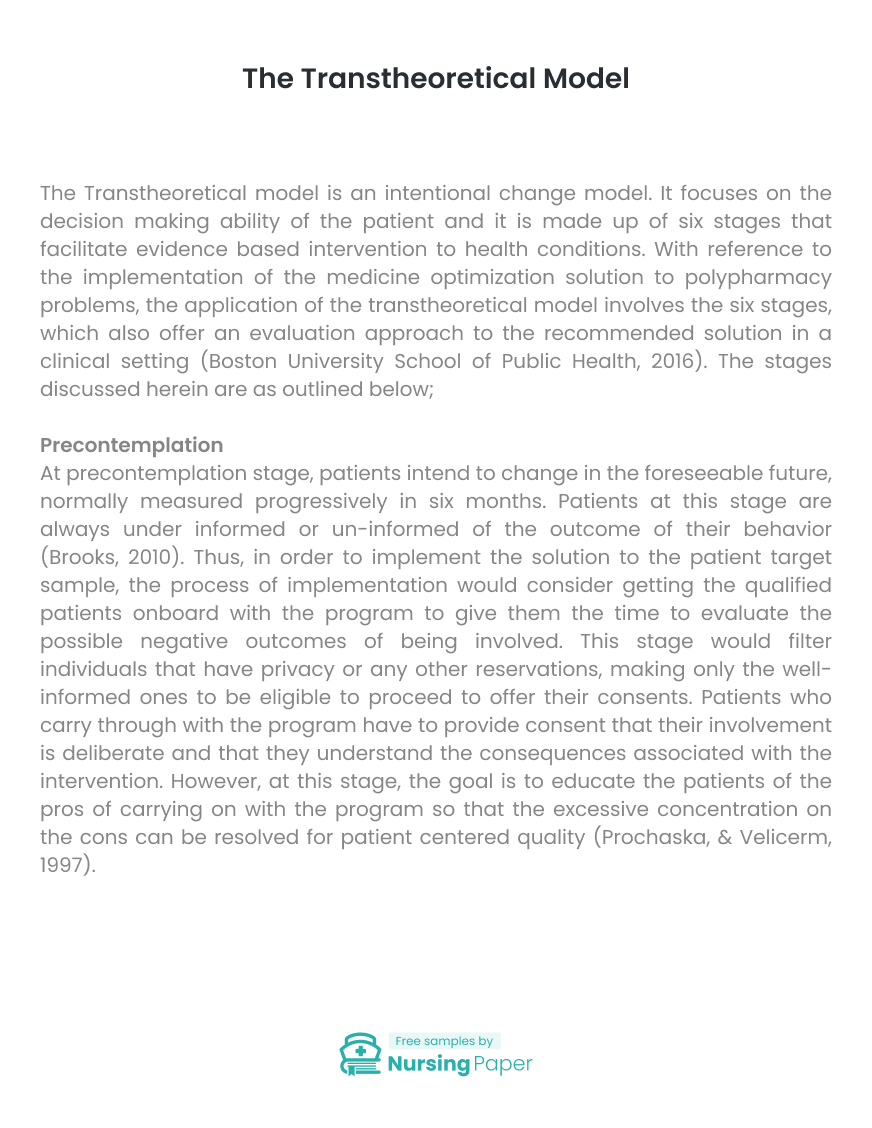1. Boston University School of Public Health. (2016). The Transtheoretical Model (Stages of Change). Accessed online on May 12, 2017 from http://sphweb.bumc.bu.edu/otlt/MPH-Modules/SB/BehavioralChangeTheories/BehavioralChangeTheories6.html
2. Brooks, G. R. (2010). Beyond the crisis of masculinity: A transtheoretical model for male-friendly therapy. Washington, DC: American Psychological Association.
3. Burbank, P. M., & Riebe, D. (2002). Promoting exercise and behavior change in older adults: Interventions with the transtheoretical model. New York, NY: Springer.
4. Campbell, R. D., & Grand Valley State University. (2006). The transtheoretical model: A theoretical application to homelessness. (Masters Abstracts International, 44-5.).
5. Daniels, J., Farquhar, C., Nathanson, N., Mashalla, Y., Petracca, F., Desmond, M., … & O’Malley, G. (2014). Training tomorrow’s global health leaders: applying a transtheoretical model to identify behavior change stages within an intervention for health leadership development. Global health promotion, 21(4), 24-34.
6. Keller, S., & Velicer, W. F. (2004). Research on the transtheoretical model: Where are we now, where are we going?. Lengerich: Pabst Science.
7. Prochaska, J. O. (2013). Transtheoretical model of behavior change. In Encyclopedia of behavioral medicine (pp. 1997-2000). Springer New York.
8. Prochaska, J. O., & Velicerm WF. (1997). The transtheoretical model of health behavior change. Am J Health Promot. Vol. 12(1):38-48.
9. Scruggs, S., Douglas, T. C., Basen-Engquist, K., Diamond, P. M., & University of Texas Health Science Center at Houston. (2008). Effect of a lifestyle physical activity intervention on transtheoretical model variables. (Masters Abstracts International, 47-1.).

The download will start shortly.



 Subject:
Subject:
 Number of pages: 4
Number of pages: 4